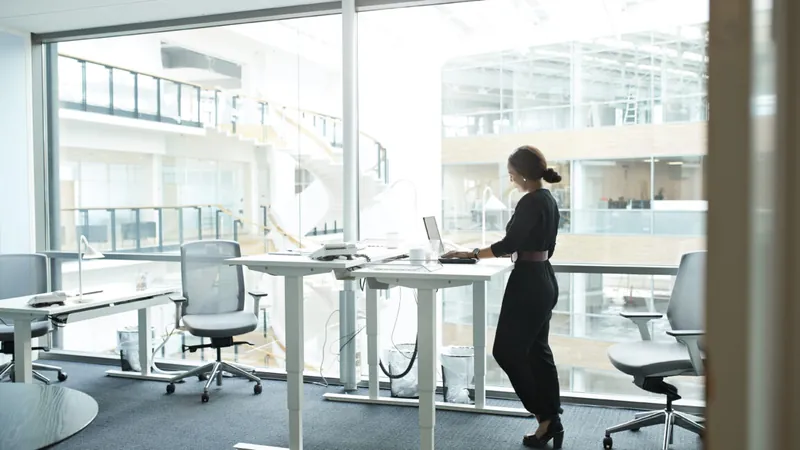
Standing Desks: A Path to Better Health or Just a Trend? The Surprising Findings You Need to Know!
2024-11-14
Author: Sophie
In an age where sedentary lifestyles dominate, maintaining an active routine has never been more crucial. Numerous studies highlight a troubling correlation between excessive sitting and serious health risks, including cardiovascular diseases and premature mortality. As we adapt to our modern work environments filled with desk jobs, the emergence of standing desks has provided a beacon of hope—allowing us to stay on our feet during work hours instead of being glued to a chair. But do these desks truly deliver on their promise of better health?
Historically, research on the effectiveness of standing desks has produced mixed results. It's clear that while they're a step away from sitting, standing still doesn't necessarily equate to physical activity. Yet, some experts believe that the distinctions between various types of 'stationary' behavior—specifically the differences between sitting at a desk and standing—could be critical.
Recent studies have sought to clarify the relationship between standing desks and health impacts. A pivotal study in the International Journal of Epidemiology led by Matthew Ahmadi from Australia evaluated over 83,000 individuals in the UK for approximately seven years. The findings indicated that while standing desks might not directly improve heart health, they certainly do not exacerbate it. Conversely, prolonged sitting has been linked with an alarming increase in cardiovascular and orthostatic circulatory disease risks.
Specifically, researchers noted a 22% increase in orthostatic circulatory disease risk with every additional hour spent in a stationary position beyond 12 hours, alongside a 13% rise in cardiovascular disease risk. Interestingly, standing posed its own challenges: after just two hours, the risk for orthostatic circulatory issues began to climb, although standing did not seem to impact cardiovascular disease risks at any point.
It’s vital to maintain a balance. The study revealed that limiting total stationary time to under 12 hours could reduce risks significantly—suggesting that a mindful combination of sitting and standing is more beneficial than simply opting for one over the other. The ideal scenario? A mix of 9 hours of sitting and 1.5 hours of standing daily provided a slight protective effect against circulatory diseases.
But should we take these findings at face value? Not so fast. This study only scratches the surface and needs to be validated in wider populations. Moreover, it did not specifically analyze the use of standing desks or the difference between occupational and leisure time sitting and standing.
More evidence comes from a study in JAMA Network Open that tracked over 480,000 Taiwanese workers over nearly 13 years. Those who sat the majority of their workdays faced greater risks for both all-cause mortality and cardiovascular disease, while those who interspersed their sitting with periods of standing showed no such increased risks.
In light of this data, the key takeaway is clear: while standing desks may help to mitigate the dangers of a sedentary lifestyle, they should not be seen as a panacea. Incorporating regular breaks and alternating between sitting and standing emerges as the most prudent strategy for achieving a healthier work-life balance.
Ultimately, it seems that moving away from a purely sitting-oriented lifestyle—whether through standing, brisk walking, or even short exercises—is essential. So, before you dive into the standing desk trend, remember the golden rule: keep your total stationary time low, stay active whenever possible, and let your body reap the benefits!









 Brasil (PT)
Brasil (PT)
 Canada (EN)
Canada (EN)
 Chile (ES)
Chile (ES)
 España (ES)
España (ES)
 France (FR)
France (FR)
 Hong Kong (EN)
Hong Kong (EN)
 Italia (IT)
Italia (IT)
 日本 (JA)
日本 (JA)
 Magyarország (HU)
Magyarország (HU)
 Norge (NO)
Norge (NO)
 Polska (PL)
Polska (PL)
 Schweiz (DE)
Schweiz (DE)
 Singapore (EN)
Singapore (EN)
 Sverige (SV)
Sverige (SV)
 Suomi (FI)
Suomi (FI)
 Türkiye (TR)
Türkiye (TR)